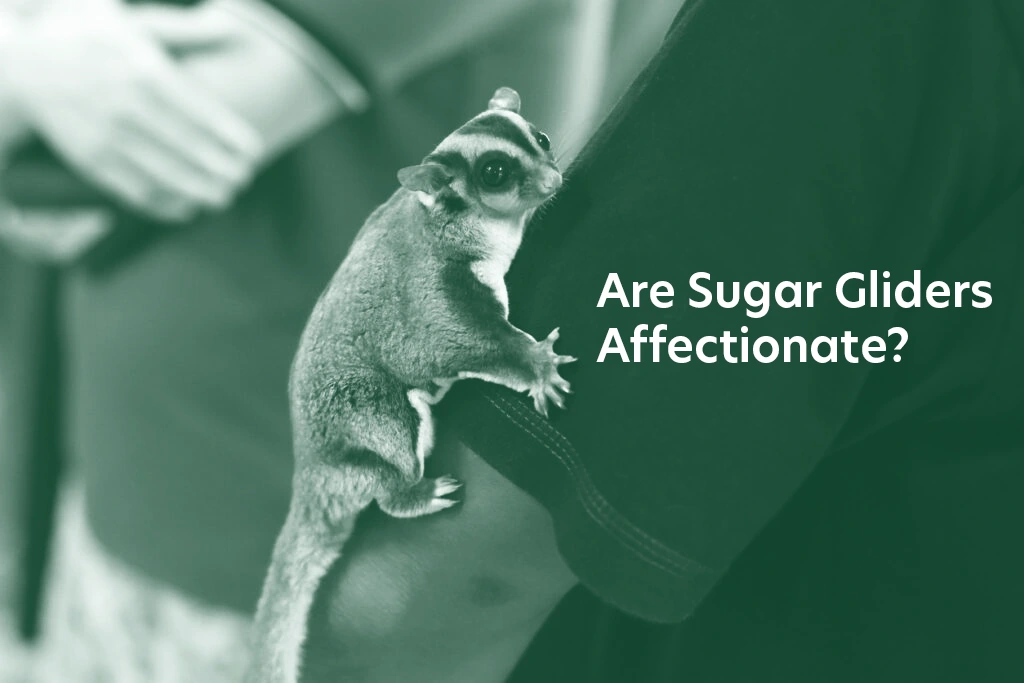Sugar gliders have been capturing the hearts of pet enthusiasts around the world. With their big eyes, flaps of skin allowing them to glide effortlessly, and their irresistibly cute appearance, it’s no wonder people are ask about their affectionate nature before or even after getting one. In this article, we will explore the topic of whether sugar gliders are truly affectionate pets, compare their behavior with children and other pets, and provide insightful facts to help you better understand your glider better.
The Answer
The short answer is yes, sugar gliders are affectionate animals that bond closely with their owners and other sugar gliders. These animals are highly social creatures that require social interaction and companionship to thrive. In fact, sugar gliders that are not provided with adequate social interaction and companionship can become depressed and even develop health problems.
Social Nature
Sugar gliders are renowned for their social nature and their ability to form deep bonds. When kept as pets, they thrive on social interaction and can become quite attached to their owners. These endearing creatures are known to exhibit strong emotions and require daily interaction to foster a healthy relationship.
Expressions of Affection
Although sugar gliders may not display affection in the same way as dogs or cats, they have their unique ways of expressing their bond/love. Some common signs of affection from sugar gliders include:
- Grooming: Sugar gliders groom each other as a sign of affection, and they may engage in grooming behavior with their owners as well. If your sugar glider begins to groom you, it is a clear sign that the animal trusts and cares for you.
- Sleeping together: Sugar gliders are nocturnal animals, and they often seek the comfort of their owners’ presence by cuddling and sleeping together. Cuddling is a great way for sugar gliders to bond with their owners and is often a sign of trust and affection.
- Purring: One of the most clear signs of affection from a sugar glider is purring. When a sugar glider is relaxed and content, it will often begin to purr, which is a sign that it is feeling happy and comfortable. Sugar gliders also enjoy cuddling with their owners and other sugar gliders, and will often snuggle up against their owners or nestle into a pouch or blanket.
- Pouch nesting: In the wild, sugar gliders nest together in tree hollows. As pets, they may seek comfort by nesting in their owner’s shirt pocket or pouch.
- Kissing: Sugar gliders are also known for their love of giving kisses. This involves gently nibbling on their owner’s ear or nose as a sign of affection. Kissing is a clear sign that your sugar glider trusts and loves you.
Strengthening The Bond With Your Sugar Glider
If you want to improve and strengthen the bond you have with your sugar glider, follow these tips:
Spend time with your sugar glider every day
Sugar gliders require daily social interaction and companionship to thrive. Spend time playing with your sugar glider, cuddling, and grooming to strengthen the bond between you and your pet.
Provide a safe environment
Sugar gliders require a safe and comfortable environment to feel secure and happy. Provide your sugar glider with a spacious cage that includes plenty of toys, climbing structures, and hiding places.
Provide a healthy and varied diet
Sugar gliders require a diet that is high in protein and includes fresh fruits and vegetables. Providing a healthy and varied diet will help keep your sugar glider healthy and happy.
Handle them with care
Sugar gliders are delicate creatures that require gentle handling. When handling your sugar glider, be sure to support their entire body and avoid squeezing or pulling on their skin or fur. This will help your sugar glider feel safe and secure in your hands.
Be Patient
Building a strong bond with your sugar glider takes time and patience. Be consistent in your interactions with your sugar glider and be patient as your pet gets to know you. Over time, your sugar glider will come to trust you and enjoy spending time with you.
You can read our how to bond with your sugar glider guide for more details on bonding tactics you can use to make your sugar glider closer to you.
Sugar Gliders and Children
When it comes to interactions between sugar gliders and children, supervision and education are important. Sugar gliders have delicate bodies and can be easily injured if mishandled. Therefore, we recommend you establish boundaries to ensure a safe environment for both the sugar glider and the child. Whenever your child is to play with the glider, please make sure an adult is around to monitor them.
Sugar Gliders vs. Other Pets
While sugar gliders can form close bonds with their owners, their interactions with other pets may differ. Sugar gliders are social creatures, and they thrive in the company of their own kind. Introducing them to other pets such as dogs, cats or hamsters, requires careful planning, supervision, and gradual acclimation to avoid stress or harm to any of the animals involved. You need to remember that each pet has its own unique temperament, and results may vary depending on the specific animal involved.
Verdict
Yes, sugar gliders are indeed affectionate pets that form deep bonds with their owners. While their expressions of affection may differ from traditional pets, their social nature and attachment to humans are undeniable. With proper care, socialization, and understanding, sugar gliders can provide endless love and companionship.
Remember that owning and caring for a sugar glider is a commitment that requires time, patience, and responsible caretaking. Don’t adopt one if you are not ready to provide the best care possible for them.
